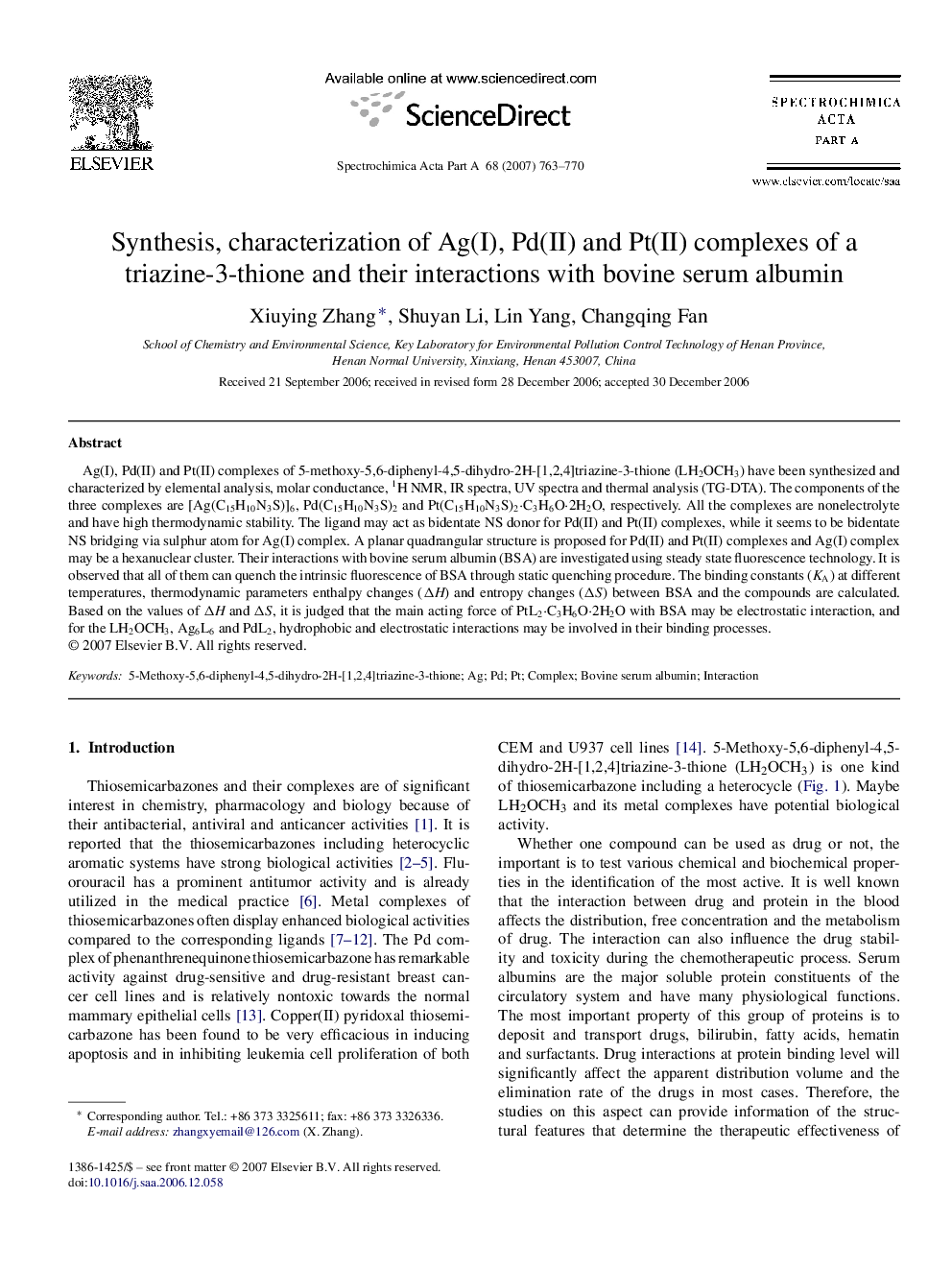| Article ID | Journal | Published Year | Pages | File Type |
|---|---|---|---|---|
| 1235564 | Spectrochimica Acta Part A: Molecular and Biomolecular Spectroscopy | 2007 | 8 Pages |
Ag(I), Pd(II) and Pt(II) complexes of 5-methoxy-5,6-diphenyl-4,5-dihydro-2H-[1,2,4]triazine-3-thione (LH2OCH3) have been synthesized and characterized by elemental analysis, molar conductance, 1H NMR, IR spectra, UV spectra and thermal analysis (TG-DTA). The components of the three complexes are [Ag(C15H10N3S)]6, Pd(C15H10N3S)2 and Pt(C15H10N3S)2·C3H6O·2H2O, respectively. All the complexes are nonelectrolyte and have high thermodynamic stability. The ligand may act as bidentate NS donor for Pd(II) and Pt(II) complexes, while it seems to be bidentate NS bridging via sulphur atom for Ag(I) complex. A planar quadrangular structure is proposed for Pd(II) and Pt(II) complexes and Ag(I) complex may be a hexanuclear cluster. Their interactions with bovine serum albumin (BSA) are investigated using steady state fluorescence technology. It is observed that all of them can quench the intrinsic fluorescence of BSA through static quenching procedure. The binding constants (KA) at different temperatures, thermodynamic parameters enthalpy changes (ΔH) and entropy changes (ΔS) between BSA and the compounds are calculated. Based on the values of ΔH and ΔS, it is judged that the main acting force of PtL2·C3H6O·2H2O with BSA may be electrostatic interaction, and for the LH2OCH3, Ag6L6 and PdL2, hydrophobic and electrostatic interactions may be involved in their binding processes.
